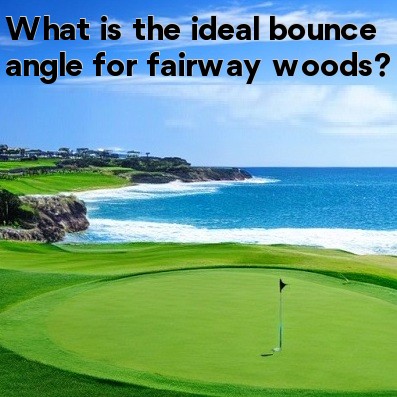
In Golf, What is the Ideal Bounce Angle for Fairway Woods?
When it comes to fairway woods, the bounce angle plays a crucial role in the performance of these clubs. The bounce angle refers to the angle between the leading edge and the lowest point of the sole of the club. It affects how the club interacts with the turf and can greatly impact the results of your shots. So, what is the ideal bounce angle for fairway woods? Let's find out.
1. Understanding Bounce Angle
Bounce angle is typically measured in degrees and can range from low to high. A lower bounce angle means the leading edge is closer to the ground, while a higher bounce angle means there is more space between the leading edge and the ground. The bounce angle helps prevent the club from digging too deeply into the turf, especially on softer surfaces.
2. Conditions Matter
The ideal bounce angle for fairway woods can vary depending on the playing conditions. A higher bounce angle is more suitable for courses with softer turf, as it helps prevent the club from digging in and allows for cleaner contact with the ball. On the other hand, a lower bounce angle can be beneficial on firmer courses, as it allows for more precise shot shaping and better control.
3. Personal Preferences
Another factor to consider when determining the ideal bounce angle is personal preferences and playing style. Some golfers prefer a higher bounce angle to feel more confident in their shots and maximize forgiveness. Others may opt for a lower bounce angle to have better control over shot trajectory and to work the ball more easily.
4. Fairway Wood Loft
The loft of the fairway wood should also be taken into account when considering the ideal bounce angle. Generally, as the loft of the club increases, a higher bounce angle is recommended. For fairway woods with lower lofts, a lower bounce angle may be more suitable to avoid excessive bouncing off the turf resulting in higher shot trajectory.
5. Seeking Professional Advice
If you are unsure about the ideal bounce angle for your fairway woods, it is highly recommended to seek advice from a professional club fitter or golf instructor. They can analyze your swing and playing style to recommend the most suitable bounce angle for your specific needs.
In conclusion, the ideal bounce angle for fairway woods depends on various factors such as playing conditions, personal preferences, and the loft of the club. It is important to find the right balance that allows for consistent and confident ball striking. Seeking professional advice can greatly help in determining the ideal bounce angle for your fairway woods and improving your overall performance on the golf course.





